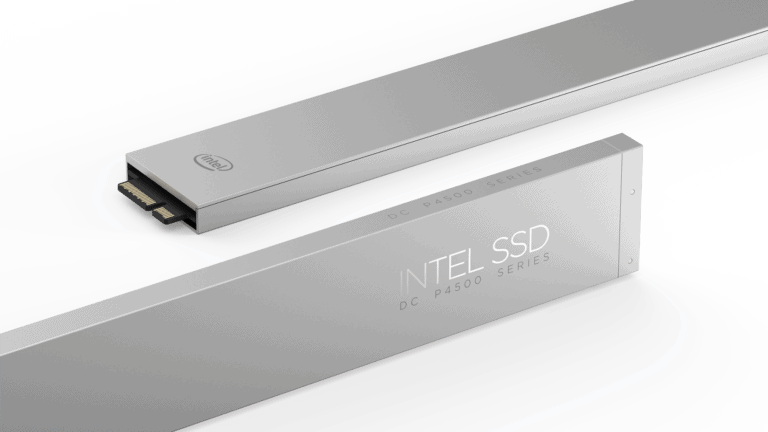Intel embraces the new ruler storage form with a 32TB variant. It wants to send a signal to the outside world that this new form factor works more efficiently and better in data centres. The ruler shape already has enough advantages to convince others.
Technology giant Intel has announced a DC P4500-SSD with 32 TB of storage. In the new solution, it uses 3D NAND flash with 64 layers. The SSD gets an innovative ruler form from Intel for better integration in servers. This allows it to put much more storage into 1-rack unit. The current legacy format has too many disadvantages for data centers, says Ryan Shrout, analyst at Shrout Research at ITProToday.
1 petabyte
The new format means that more high speed storage is possible in a smaller space. SSDs do not benefit from the old 2.5-inch format. The new ruler shape allows you to place memory chips next to each other. The elongated design also requires half as much cooling according to Intel.
One server slot can hold up to 32 ruler SSDs. This means that one slot can deliver up to 1 petabyte to NVMe storage. The new design requires only a tenth of the energy compared to classic hard drives and barely a twentieth of the space, according to Intel. The ruler shape delivers hot-swap functionality, high density and high performance in data centers.
Workgroup
The Enterprise and Data Center SSD Form Factor Working Group (EDSFF) is actively engaged in promoting the new design. The main members are Intel, HPE, Dell EMC, Lenovo, Microsoft, Samsung and numerous other technology manufacturers. Chances are that others will take the new form of pushing more innovation within data centers.
The working group is very much focused on the promotion of SSDs with hot-swap functionality. The SSD must fit vertically into 1U and work with the existing server and storage infrastructure. Shrout expects it to evolve rapidly: The ruler design brings hot-swap, high density and high performance to future data center designs. The migration from classic hard drives to solid state has long been underway, and the Intel design can only accelerate it.
This news article was automatically translated from Dutch to give Techzine.eu a head start. All news articles after September 1, 2019 are written in native English and NOT translated. All our background stories are written in native English as well. For more information read our launch article.